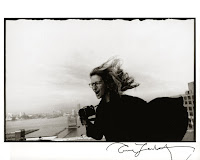For several years, fashion designers have been experiment with 3D printed clothing. Generally, their fanciful creations have been unique, but unlikely to be worn beyond the runway. The thermoplastics that work great in the typical 3D printer are not conducive to creating comfortable, flexible garments.
Shoes are another story. They are perfect candidates for 3D printing. Every foot is slightly different than every other, and a shoe that is perfectly matched with the foot may be more comfortable than a mass produced shoe. A shoe needs to be strong and lightweight which are characteristics well suited for 3D printing. Finally, people are willing to spend significant resources on finding and buying shoes which justify the extra design and manufacturing costs required for a personalized product.
 |
| Image from Feetz press kit |
Feetz, which has just completed round one of beta testing, bills itself as the digital cobbler. Using three pictures of each foot, the Feetz app allows you to design a pair of custom made shoes that they will build and ship to you. Their marketing claim is "We offer 7 billion sizes: 1 for every
one in the world."
For a more traditional look,
People Footwear have combined 3D printing and digital knitting to create a line of shoes that look remarkably normal. These, however, are produced in a standard set of colors and standard sizes which leads me to wonder how much they differ from non-3D printed shoes.
 |
| Nike Vapor Laser Talon |
Nike is using Selective Laser Sintering to print the cleats on the Nike Vapor Laser Talon which is designed to improve traction and acceleration on football turf. The process shortened the prototyping time and enabled the manufacturing of a unique mesh that weighs only 159 grams.
What type of shoes would you to print?
You might also like:
What to 3D Print at Home
Top Tech Stories of 2015
Folding, Fashion and 3D Printing
3D printed shoes on the catwalk in Paris










